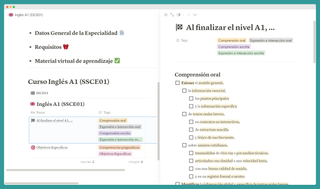"I broke the window."
Or "The window was broken."
Understanding the use of active and passive voice is crucial for effective communication, especially in professional settings where the choice between the two can subtly influence the message's reception.
Here are various situations where the passive voice is particularly useful.
Table of Contents
- Uses of the Passive Voice in English
- To emphasize the action or result rather than the doer
- When the subject is unknown or irrelevant
- To describe a condition in which the subject finds itself
- To avoid assigning blame or responsibility
- To create a sense of objectivity
- For stylistic reasons, or to vary sentence structure
- When the action's recipient is more important than the doer
- To report on actions where the actor is obvious or assumed
- In formal or academic writing to sound more authoritative or impersonal
- To tactfully address sensitive topics
Uses of the Passive Voice in English
To emphasize the action or result rather than the doer
When the focus should be on what happened rather than who caused it, the passive voice shifts the emphasis appropriately.
This is common in scientific writing, where the process or outcome is more important than the researcher's identity.
"The new vaccine was developed in record time."
When the subject is unknown or irrelevant
If the doer of the action is not known or is not important to the context of the message, the passive voice allows for the omission of the actor.
This can be seen in crime reports or incident descriptions where the perpetrator is unknown.
"The documents were found left on the printer."
To describe a condition in which the subject finds itself
The passive voice can effectively describe situations where the subject is in a particular state or condition as a result of an action, focusing on the state rather than the action itself.
"The building was left in complete darkness (after the power outage)."
To avoid assigning blame or responsibility
The passive voice can be used to avoid directly attributing fault, which can be a diplomatic tool in sensitive situations.
This is often seen in political language or corporate communications to soften the impact of negative news.
"It was decided that the project deadline would be extended."
To create a sense of objectivity
In news reporting and academic writing, the passive voice can help create a tone of impartiality and detachment.
By focusing on the facts or events rather than the individuals involved, it contributes to a perceived neutrality.
"It was reported that the economy had grown by 2% in the last quarter."
For stylistic reasons, or to vary sentence structure
In both fiction and non-fiction writing, varying sentence structure can make the text more engaging and readable.
The passive voice can serve as a tool for achieving this variety, especially when used judiciously alongside active voice constructions.
"After many years, the lost painting was discovered in an attic."
When the action's recipient is more important than the doer
In certain narratives or descriptions, the interest or focus lies on the individual or object experiencing the action.
The passive voice ensures that this element of the sentence is highlighted.
"The award was received by the team with great excitement."
To report on actions where the actor is obvious or assumed
In contexts where the actor is clear from the situation or general knowledge, the passive voice allows for concise statements without unnecessary repetition of the actor's identity.
"The national anthem was played before the game started."
In formal or academic writing to sound more authoritative or impersonal
The passive voice can contribute to the formal tone often preferred in academic writing, legal documents, and formal reports, where the emphasis is on the information conveyed rather than the personal voice of the writer.
"A series of experiments were conducted to test the hypothesis."
To tactfully address sensitive topics
When discussing topics that might be uncomfortable or sensitive, the passive voice can provide a way to broach the subject with a degree of separation or detachment, making the conversation less direct and potentially less confrontational.
"Concerns have been raised regarding the new policy."




